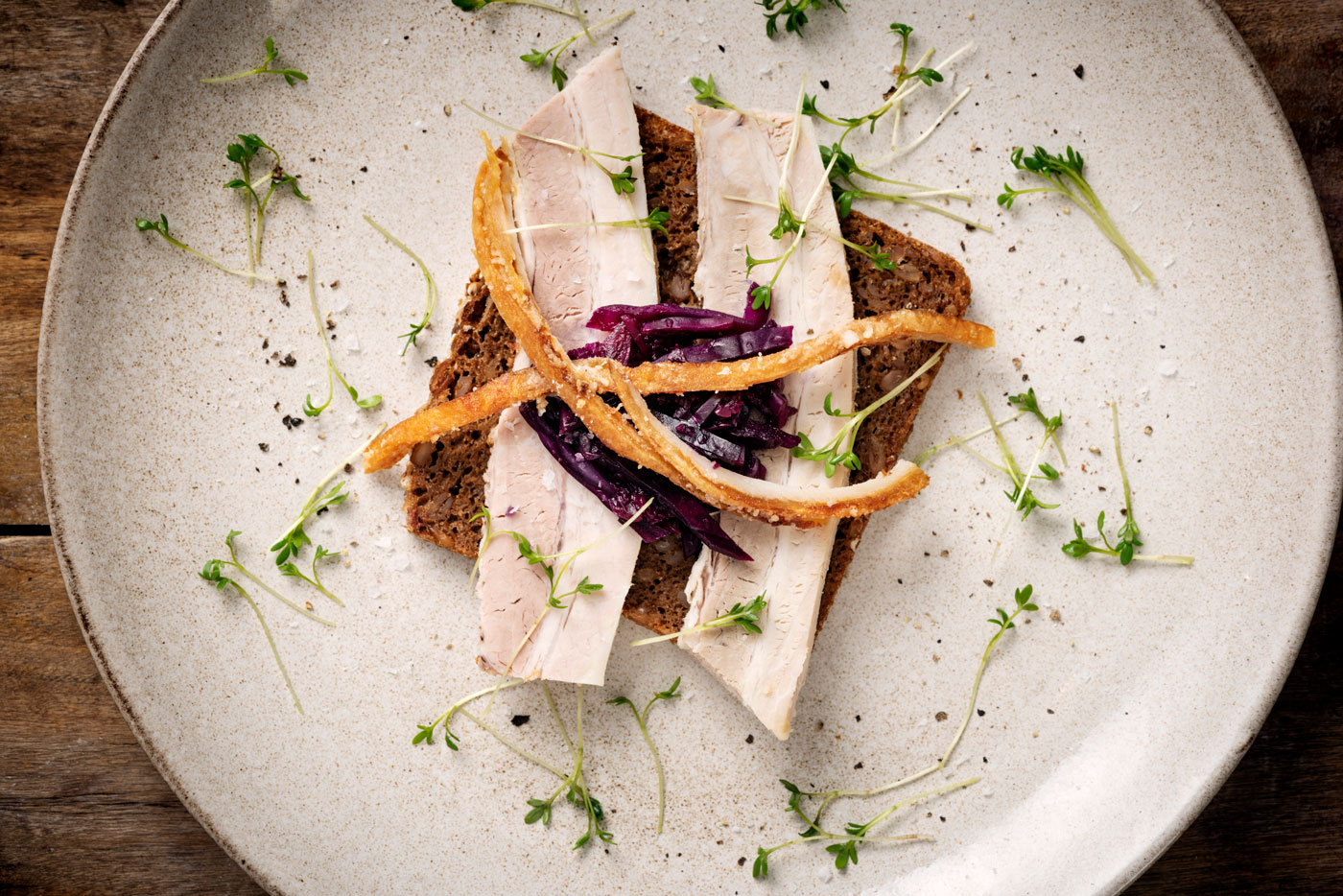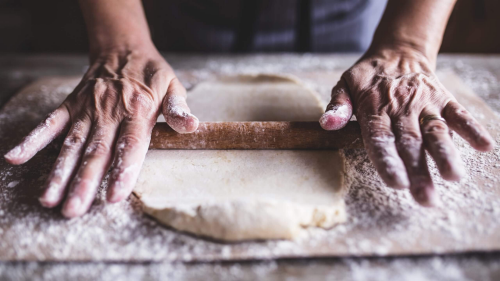
There’s truly nothing like biting into a fresh piece of beautifully baked bread. Just the heady, yeasty aroma of bread baking or toasting heightens the anticipation for a meal. Uncovering warm bread in its basket – ready to be slathered with butter or dipped in olive oil – gives you a comforting sense that all is right in the world.
Although prepared in a variety of ways, with a broad range of ingredients from country to country and culture to culture, bread is universal. You’re bound to try types that are new and pair well with a variety of different dishes. Here are some of the delicious differences in bread and grains and in how this staple has been adapted to suit varying needs around the globe.
PASSAGE TO INDIA
We never cease to be delighted by the dozens of varieties of Indian breads, such as roti, dosa, naan, puri, and chapatti, as wonderfully diverse as the country itself. They’re made with flour including rice, millet, chickpea, wheat, buckwheat, pulse, lentil, and mat bean. When it comes to authentic Indian flour, black lentil flour is considered the real deal. Try to use it for making Indian breads including papadum and for Indian-style doughnuts — little balls of goodness that resemble beignet or doughnut holes.
Most Indian breads are baked on a metal griddle, but others are fried, deep-fried, or steamed. They can be layered, stuffed with ingredients like mincemeat and fried potatoes, and flavored with herbs and spices, including chilies and saffron.


SCANDINAVIAN SLICES
If you like to boost the nutritional value of sandwiches, that’s where traditional Danish breads come in. Traditional Danish rye and whole-grain breads are hearty, nutritious, and tailor-made for open-faced sandwiches, which grew in popularity thanks to the Industrial Revolution.
Like many of us, Danish factory workers brought their lunches to work, and open-faced sandwiches helped fuel them during their breaks. The sturdy slices of the bread are perfect for open-faced sandwiches topped with smoked salmon or herring, slices of hard-boiled egg, cold meats, cheese, chives, cucumber, and more. We love to serve the ingredients for open-faced sandwiches on a smorgasbord, making it easy for everyone to choose their toppings.


CHINESE DUMPLINGS
Chinese dumplings can be made with wheat or rice flour and fried, steamed, or boiled. It’s fascinating that they come filled not only with delicious ingredients, but also with meaning and cultural significance. Often, they’re served to celebrate holidays and other special occasions.
Many dumpling shapes are symbolic. For instance, to celebrate the Lunar New Year, moon-shaped dumplings called jiaozi are eaten. And money-shaped dumplings are believed to bring good fortune in the New Year.

ITALIAN BREADS
When serving Italian dishes, pair them with Italian breads–there are plenty to choose from. A number of different types of Italian bread originated in specific regions of the country. Puglia, known as Italy’s breadbasket is the source of at least five different Italian breads, including tarelli, friselle, and olive bread.
Sicily is known for its varieties of bread, including sweet-tasting pane Siciliano, made with semolina flour and topped with sesame seeds. Genoa is celebrated for its focaccia Genovese, which comes in different varieties including topped with herbs like rosemary and with vegetables. We also find that focaccia is a handy, flavorful snack bread to have around the house.


BRIOCHE, BAGUETTE, AND CROISSANT
When we think of bread, we think of France. And there are few foods that are more evocative of France than the baguette, which is pervasive in pop culture depictions of the country. The development of the long, slender loaves is often attributed to three innovations in bread baking that made their way to France. They include the development of the Viennese steam oven, compact yeast, and high-milled flour in the 19th century.
If you’re looking for an individual-sized baguette, opt for bahn mi. In Vietnamese, bahn mi means bread, and it’s also a kind of small baguette used for Vietnamese sandwiches. The baguette made a culinary impact on Vietnam when France occupied the country, and the happy result is the bahn mi. The sandwiches include ingredients like pickled daikon, cucumber, chili sauce, egg, fish, mayonnaise, chicken, and pork sausage.



Flaky, buttery, and fresh-baked for breakfast, the croissant is another variation on bread that seems to represent France. It’s surprising to learn that the croissant didn’t originate in France; rather, it was in Austria, and the Ottoman Empire played a pivotal role in the story.
The kipfel, a crescent-shaped Austrian pastry, is believed to be the progenitor of the croissant. The story goes that the kipfel’s crescent shape is a Viennese baker’s nod to the crescent moon display on the Ottoman flag. It was created to celebrate Austria’s victory over the Ottomans when they invaded Vienna.
Sweet, fluffy, eggy brioche is another bread associated with France that might just have its origins in another country, namely Romania. Speaking of breakfast, use brioche to make French toast super rich, thick and even more delicious! But back to Romania — the Romanians have their own version of brioche. It’s in a sweet Christmas bread called cozonac and is also used in croissants. Put it on your list of things to try.
ETHIOPIAN INJERA
Teff is an ancient grain that’s a key source of nutrition in Ethiopia. Teff seed flour is the iron-rich grain used to make the spongy Ethiopian sourdough flatbread known as injera. The batter is fermented and boiled to create the bread’s springy texture. The end result is nutty and rich.
Ethiopians use injera to eat foods like stews, and it’s central to Ethiopian meals. Somewhere between a pancake and a crepe in thickness, we can appreciate the fact that injera can do triple duty as an eating utensil, plate, and food.
However it’s being prepared and served, bread has earned a special place on the plates of people all around the world. It’s a versatile food and has been manipulated into a variety of different dishes. Wherever you’re from or wherever you travel to, you’re bound to find a new way to enjoy this tasty, universal food.


Related Articles
-
 Food & Drink March 16, 2020 | 5 min read Going Rogue in the Kitchen Eventually, I did what most people do when they’re feeling confident in the kitchen. I whipped up a pot of homemade soup without any instructions.
Food & Drink March 16, 2020 | 5 min read Going Rogue in the Kitchen Eventually, I did what most people do when they’re feeling confident in the kitchen. I whipped up a pot of homemade soup without any instructions. -
 Food & Drink March 16, 2020 | 6 min read Delicious Differences: Potatoes Mashed potatoes. Fried potatoes. Hash browns. Baked potatoes. The list goes on for all the ways you can prepare potatoes in the kitchen.
Food & Drink March 16, 2020 | 6 min read Delicious Differences: Potatoes Mashed potatoes. Fried potatoes. Hash browns. Baked potatoes. The list goes on for all the ways you can prepare potatoes in the kitchen. -
 Food & Drink June 11, 2020 | 6 min read Food Traditions Family traditions don’t always have rhyme or reason, but they give us something to look forward to, and remind us to be grateful.
Food & Drink June 11, 2020 | 6 min read Food Traditions Family traditions don’t always have rhyme or reason, but they give us something to look forward to, and remind us to be grateful.